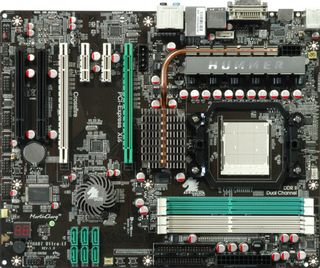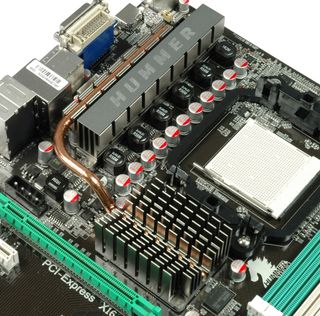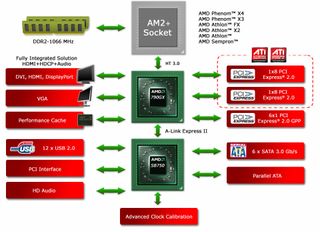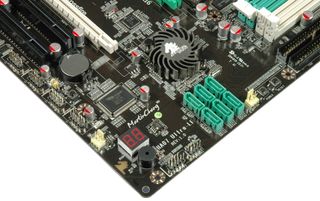Optimizing Your Phenom II Overclock For Efficiency
The Platform: Jetway HA07 Ultra With AMD's 790GX Chipset


Various motherboard manufacturers offer products that center on AMD’s 790GX chipset, and we decided to use one from one of the less dominant brands this time around. You'll see the heavier-hitters in an upcoming roundup of Socket AM3 790FX-based boards.
The Jetway HA07 Ultra “Hummer” is an enthusiast product aimed at ATI CrossFire graphics configurations. The chipset enables the motherboard with two x16 PCI Express slots running at eight lanes each. In addition, the 790GX has six more PCI Express lanes that can be used for expansion cards. Since AMD implements PCI Express 2.0, each slot offers twice the bandwidth than PCI Express 1.1 implementations (250 MB/s per lane upstream and downstream).

Although the 790GX is aimed at enthusiasts, it comes with integrated graphics. The HA07 Ultra provides a standard VGA and DVI port, and it has an additional Side-Port memory chip, which the system uses to accelerate 3D performance by combining the shared memory and the Side-Port RAM. Once you install a discrete graphics card, the integrated unit based on a Radeon HD 3300 core can either be switched off or used to enable SurroundView.
The HA07 Ultra turned out to be more power efficient than two other motherboards we had in our hands at the time we started the tests. Obviously, the small number of additional components paired with a six-phase voltage regulator is beneficial for overall power consumption, as other system requires 10-15 watts more at idle and at peak power. Jetway’s board still offers an UltraATA/133 controller for legacy drives, as well as a floppy connector, which is explosed through the SB750 southbridge from AMD. Both are available next to the four DDR2 memory sockets and the power supply connector, which means that typical ribbon cables will be long enough to connect drives installed in upper bays of a tower case.

Jetway also deploys a heat pipe cooling solution for the voltage regulators and the 790GX chipset. And although it’s not as massive or physically imposing as other heat pipes, it should still perform effectively given the relatively efficient platform.




Stay on the Cutting Edge
Join the experts who read Tom's Hardware for the inside track on enthusiast PC tech news — and have for over 25 years. We'll send breaking news and in-depth reviews of CPUs, GPUs, AI, maker hardware and more straight to your inbox.
Current page: The Platform: Jetway HA07 Ultra With AMD's 790GX Chipset
Prev Page AMD Phenom II X4 940 Black Edition (BE) Next Page Settings: 2.8, 3.0, And 3.2 GHzMost Popular

